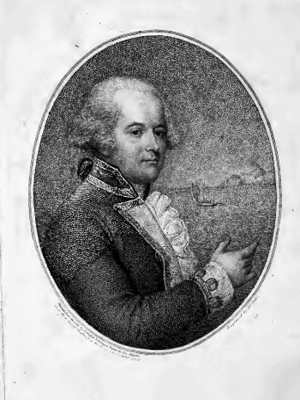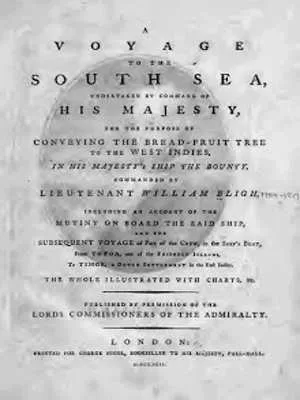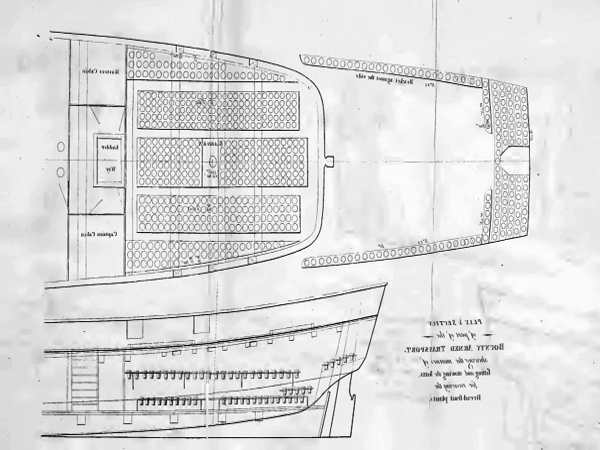William Bligh’s naval career is a tale of determination, early ambition, and the daunting challenges of leading men on perilous voyages. Born in St Tudy, Cornwall, in 1754, Bligh joined the Royal Navy at the age of seven—a common practice for young gentlemen aspiring to naval officer ranks. His early start laid the groundwork for a storied career that included serving under one of history’s greatest explorers, Captain James Cook, and later captaining the infamous HMS Bounty.
Early Naval Life and Service Under Captain Cook
Bligh’s journey through the Navy began at a young age, but he truly honed his skills as a midshipman at sixteen, training in navigation, seamanship, and cartography. His big break came when Captain James Cook, the “first navigator in Europe,” selected Bligh to serve as sailing master on the HMS Resolution during Cook’s third and final voyage in 1776. This expedition aimed to discover the Northwest Passage—a sea route connecting the Pacific and Atlantic Oceans north of North America, which, if found, would eliminate the treacherous southern routes like Cape Horn.

Under Cook’s mentorship, Bligh received top-tier training in surveying, navigation, and leadership. He witnessed Cook’s encounters with indigenous cultures, scientific exploration, and the harsh realities of long sea voyages. Unfortunately, Cook was killed by Hawaiian natives in 1779, leaving Bligh and the rest of the crew to navigate back to England without achieving the primary goal of their mission.
Bligh’s Return to the Navy and the Bounty Mission
After leaving the Royal Navy following Cook’s death, Bligh worked in the merchant fleet until 1787, when he was called back to lead a mission that would cement his place in maritime history. Bligh took command of the HMAV Bounty, a former Hull-built collier named Bethia, which had been specially refitted for a unique mission: transporting breadfruit and mangosteen plants from Tahiti to the West Indies as a cheap food source for plantation slaves.

The expedition was orchestrated by Sir Joseph Banks, President of The Royal Society and a renowned botanist who had sailed with Cook during his first voyage. Banks, who had recognized the value of breadfruit during his time in Tahiti in 1769, saw the potential of the plant as a high-yield, nutritious food source for enslaved people in the Caribbean. He lobbied the Admiralty to support the mission, offering a prize and Gold Medal for its success.
Bligh assumed command of the Bounty and set sail on December 23, 1787. Initially, his plan was to round Cape Horn, but fierce storms made it impossible to pass. After a month of battling the elements, Bligh made the strategic decision to change course and take the longer eastern route via the Cape of Good Hope.
Navigating Challenges and Reaching Tahiti
Despite the setbacks, Bligh’s leadership and seafaring skills were evident. He maintained strict hygiene standards on board, organized regular exercise for his men, and ensured a nutritious diet to keep his crew healthy—a crucial element for survival on long voyages. His meticulous logbooks detailed the ship’s progress and highlighted his exceptional navigational skills.

On October 26, 1788, the Bounty finally reached Tahiti, completing an arduous journey of 27,086 miles in ten months, averaging 108 miles per day. Bligh’s success in navigating the treacherous seas showcased his expertise and determination, even as underlying tensions with his crew foreshadowed the troubles that lay ahead.
Legacy of Leadership and Conflict
Bligh’s mission to Tahiti was a testament to his navigational prowess and his commitment to the Navy’s goals. However, his journey was marred by internal strife and the challenges of commanding a crew under extreme conditions. While Bligh’s achievements are often overshadowed by the infamous mutiny that would later occur, his story remains a remarkable chapter in the history of maritime exploration and leadership.
Bligh’s life, shaped by early naval ambition and punctuated by his association with Cook, remains a fascinating study of resilience and command at sea. His role in the Bounty saga continues to captivate historians and maritime enthusiasts alike, reminding us of the complexities of leadership on the high seas.

